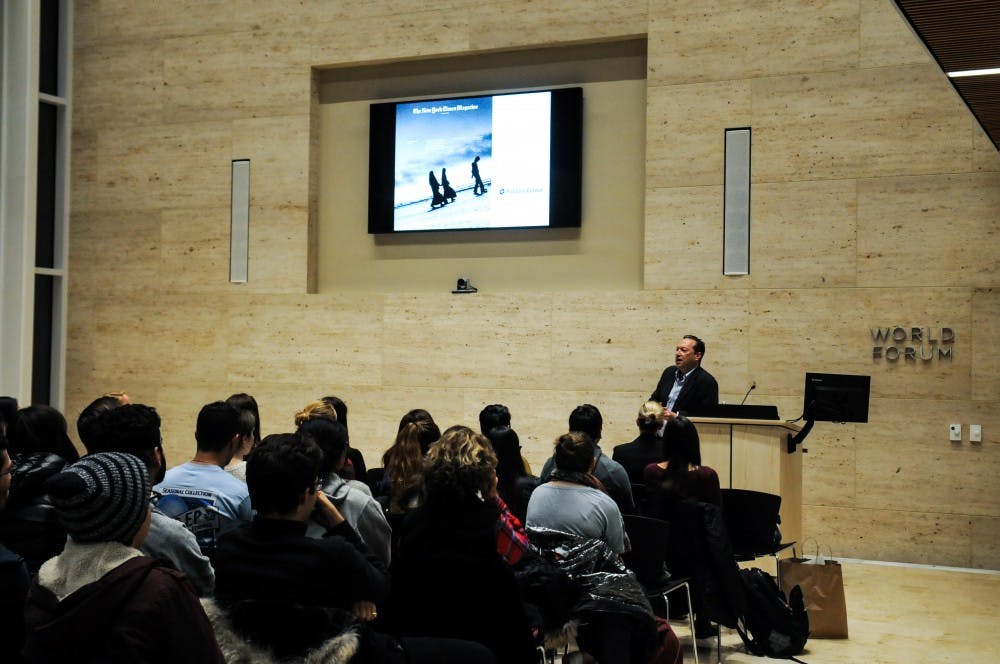“All day long I could hear mines going off around town,” New York Times journalist Scott Anderson said, describing a war-torn town in Iraqi Kurdistan.
Tuesday night at the Perry World House, Anderson talked to students about the politics of the Middle East and his experience documenting the region for his story, “Fractured Lands: How The Arab World Came Apart.” The piece filled the entire Aug. 14 issue of The New York Times Magazine and focused on the stories of individuals in Egypt, Libya, Syria, Iraq and Iraqi Kurdistan following the American invasion of Iraq in 2003.
Anderson recalled interviewing former Libyan dictator Muammar Gaddafi during his time in the Middle East. He described Gaddafi's accurate prediction that an American invasion of Iraq would destabilize politics in the region and commented on some of Gaddafi's unusual mannerisms.
“Whenever I would ask him a question he would do these long, theatrical pauses” Anderson said.
Anderson explained how, in his magazine piece, he aimed to depict the political climates of several countries through the personal narratives of individuals.
“By interweaving their stories over time, I could hopefully tell a larger story,” Anderson said.
At the event, organized by the Pulitzer Center on Crisis Reporting, the South Asia Center and the Middle East Center, Anderson described the individuals featured in the story, including a Libyan spy for the Gaddafi regime who joined rebels after he was betrayed by the government. Anderson noted that it wasn’t always easy to find characters whose personal experiences were representative of broader changes in their countries.
“A lot of it is switching horses in midstream,” Anderson said, referring to the instances when he had to drop subjects who were hesitant to share personal details or whose personal narratives were not centered around political developments. First-year Penn Law student Allyson Reynolds said after the event that she was impressed he spent so much time reporting the magazine piece, which took Anderson 18 months to report.
To provide context for his discussion, Anderson gave a brief history of the recent politics of the Middle East. He said many of the major problems plaguing the region today are the fallout of events that took place a hundred years ago.
During her introduction to the event, School of Social Policy and Practice student Rachel Townzen warmed up the crowd with a reflection on her time in Jordan, where she studied and worked with Syrian refugees. “I got to Jordan and uncovered a whole world of other things that were going on” she said.
Much of the discussion focused on the Islamic State group, which Anderson said is more dangerous than al Qaeda and the Taliban because those who join IS are poorer and often less religious than members of al Qaeda and the Taliban.
“They joined because in an utterly powerless life they could pick up a gun and all of the sudden everybody would respect them and fear them,” he said.









